Seasonic Snow Silent 750W Power Supply Review
Recently, Seasonic introduced a new 750W Snow Silent unit, featuring Platinum-rated efficiency, fully modular cabling and semi-passive operation.
Why you can trust Tom's Hardware
A Look Inside And Component Analysis
Parts Description
Our main tools for disassembling PSUs are a Thermaltronics soldering and rework station and a Hakko 808 desoldering gun.
Parts Description table
| Primary Side | |
|---|---|
| Transient Filter | 4x Y caps, 3x X caps, 2x CM chokes, 1x DM choke, 1x MOV |
| Inrush Protection | NTC Thermistor & Relay |
| Bridge Rectifier(s) | 2x GBJ1506 (600V, 15A @ 100 °C) |
| APFC MOSFETs | 2x Infineon IPP60R199CP (650V, 10A @ 100 °C, 0.199 ohm) |
| APFC Boost Diode | 1x SiC SCS106AG (600V, 6A @ 25 °C, 1.7 VF) |
| Hold-up Cap(s) | 2x Nippon Chemi-Con (420V, 270uF each or 540uF combined, 2000h & 105 °C, KMR) |
| Main Switchers | 4x Infineon IPP50R250CP (550V, 9A @ 100 °C, 0.25 ohm) |
| APFC Controller | ON Semiconductor NPC1654 |
| Switching Controller | Champion CM6901 |
| Topology | Primary side: Full-Bridge & LLC Resonant Converter Secondary side: Synchronous Rectification & DC-DC converters |
| Secondary Side | |
| +12V MOSFETs | 4x MOSFETs |
| 5V & 3.3V | DC-DC Converters: 6x Infineon BSC0901NS PWM Controller: APW7159 |
| Filtering Capacitors | Electrolytics: Nippon Chemi-Con (105 °C, KY, KZE), Rubycon (105 °C) Polymers: Nippon Chemi-Con, FPCAP |
| Supervisor IC | Weltrend WT7257V & AS393 (OVP, UVP, OCP, SCP ) |
| Fan Model | Hong Hua HA1225M12F-Z (12V, 0.45A, Fluid Dynamic Bearing, 2050 RPM) |
| 5VSB Circuit | |
| Standby PWM Controller | Infineon ICE2QR4765 |





Seasonic introduced its XP2S platform with the Snow Silent 750, which includes some minor modifications compared to the XP2, offering a bit higher overall performance. In the primary side, we find a full-bridge topology along with an LLC resonant converter, while in the secondary side a synchronous design regulates the +12V rail. Both VRMs (voltage regulation modules) are installed on the modular board for decreased energy loss. This is a design that Seasonic introduced first, then other PSU manufacturers adopted it later.



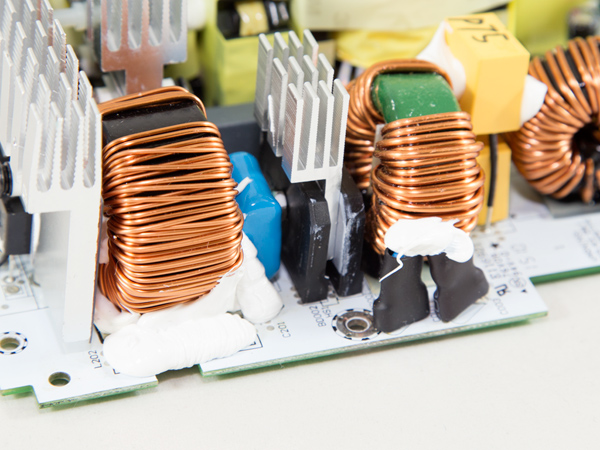


A sealed PCB right behind the AC receptacle hosts the first part of the EMI filter, including two Y caps, a single X cap and a CM choke. On the main PCB there are more transient filter components: two X and two Y caps, a CM and a DM choke and an MOV (metal oxide varistor). There is also an NTC thermistor, which provides protection against large inrush currents, accompanied by an electromagnetic relay that allows it to cool down fast once the start-up phase of the PSU is finished. Finally, both bridge rectifiers (GBJ1506) are bolted on a dedicated heat sink.

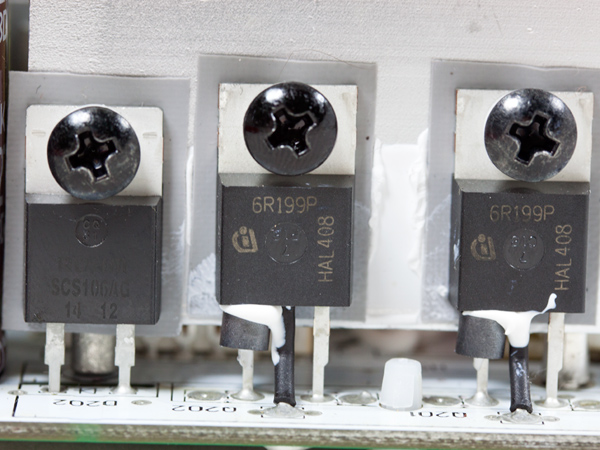



In the APFC converter, two Infineon IPP60R199CP (650V, 10A @ 100 °C, 0.199 ohm) FETs are used along with a single SiC SCS106AG (600V, 6A @ 25 °C) boost diode, which has 1.7 volts forward voltage drop in worst-case scenarios. The two bulk caps are provided by Nippon Chemi-Con (420V, 270uF, 2000h @ 105 °C, KMR), and a combined capacity of 540uF. The Snow Silent 1050 has three Infineon IPP60R165CP FETs in this section and a single CREE C3D08060A boost diode along with three Chemi-Con bulk caps with 990uF combined capacity. Finally, the APFC controller is installed on a small daughterboard and it is the same as the one used in the 1050W unit. It is provided by ON Semiconductor and its model number is NPC1654.


The primary switchers, four Infineon IPP50R250CP (550V, 9A @ 100 °C, 0.25 ohm) FETs, are configured into a full-bridge topology. Seasonic also utilizes an LLC resonant converter in order to minimize energy loss, increasing the unit's efficiency.
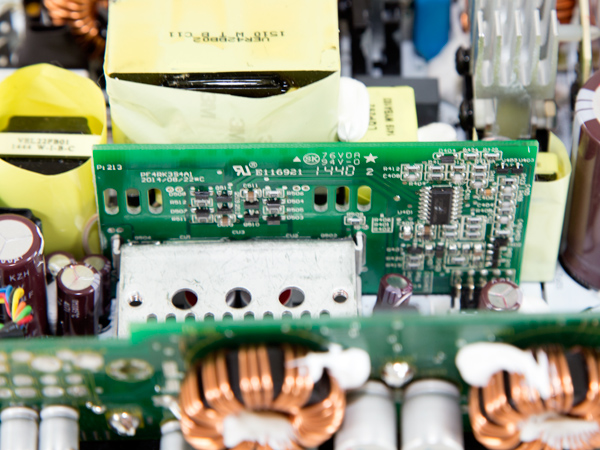





In the secondary side, the +12V MOSFETs are installed on a large vertical PCB and cooled by two heat sinks, which are connected together through a pair of bolts. Unfortunately, Seasonic didn't use any thermal conductive grease between these heat sinks. Judging from the duration of the semi-passive mode, however, we don't think that this is a significant issue. Underneath the heat sinks is a series of polymer caps, provided by FPCAP, which filter the +12V rail along with several Chemi-Con electrolytic caps. Seasonic used high-quality filtering caps in this unit (appropriate for its price point and category). FPCAP initially belonged to Fujitsu. However, it was later bought by Nichicon, a company widely known for its quality caps.
Get Tom's Hardware's best news and in-depth reviews, straight to your inbox.




Both DC-DC converters are installed on the modular PCB for reduced energy loss on power transfer cables or PCB traces. Each converter uses three Infineon BSC0901NS FETs and the common PWM controller is an Anpec APW7159. On the front of the modular PCB, several Chemi-Con polymer caps further suppress ripple.

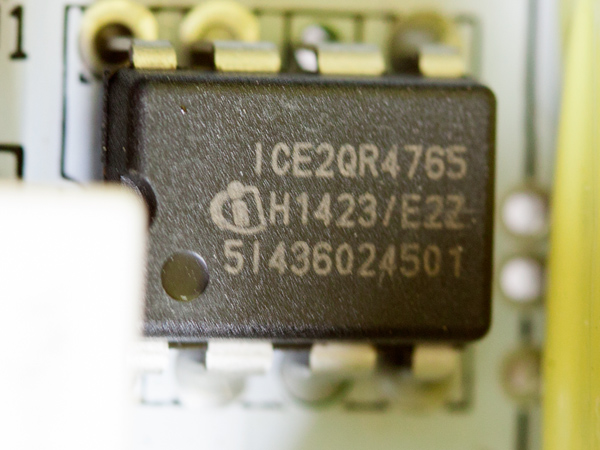
The standby PWM controller is an Infineon ICE2QR4765 IC.
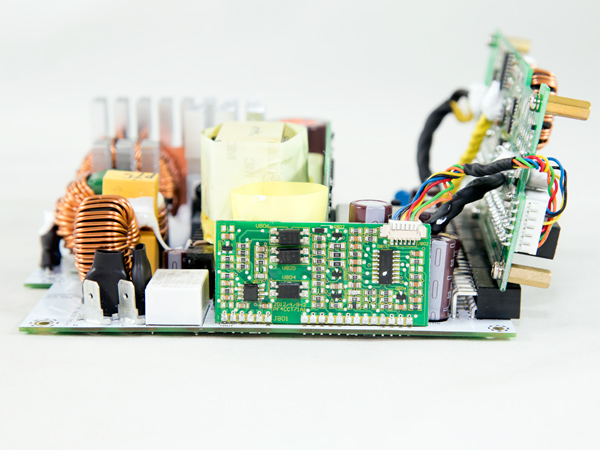



A daughterboard in the secondary side hosts the supervisor IC, a Weltrend WT7257V, along with an AS393 dual-voltage comparator. The WT7257V supports OCP for up to two +12V virtual rails, through the Snow Silent 750 only has one.






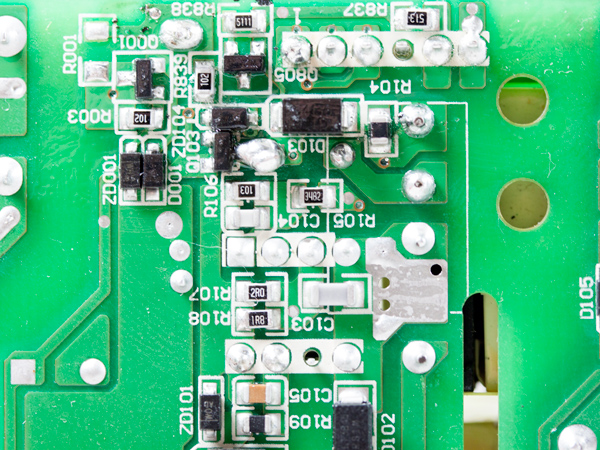
Overall, soldering quality on the main PCB is very good, as it should be in a high-end PSU like this one.
Hong Hua provides the cooling fan, and its model number is HA1225M12F-Z (12V, 0.45A, 2050 RPM). It uses a Fluid Dynamic Bearing, which provides a long lifetime along with lower noise output compared with a double-ball-bearing fan sporting the same specifications. The FDB fan, a semi-passive mode that last quite a while under normal operating conditions and a relaxed fan profile ensure that this supply runs quietly.
Current page: A Look Inside And Component Analysis
Prev Page Packaging, Contents, Exterior And Cabling Next Page Load Regulation, Hold-Up Time And Inrush Current
Aris Mpitziopoulos is a contributing editor at Tom's Hardware, covering PSUs.
-
dragget "Unfortunately, the on/off switch for toggling hybrid mode is located on the back side of the PSU, so accessing your system's internals becomes necessary if you want to change fan modes."Reply
Most likely they did it this way to avoid having two switches on the outside face of the PSU. If they had placed both switches there I can see people reaching around the back of their case to change fan modes and accidentally turning off their PC because they flipped the wrong switch. -
Adroid Yea to be honest I prefer the fan/hybrid toggle on the INSIDE of my case anyway. I put my Seasonic Platinum 650W in hybrid mode a long time ago and forgot about it.Reply
I don't see any need to flip the switch on and off, in fact I can't think of a single good reason why I would ever want to touch the thing again. So for me, it would be a con to have the switch on the outside of the case. -
Aris_Mp this switch is much smaller than the on/off one so it is really hard to mix them up. Also the on/off switch is harder to activate. In any case as a reviewer I see this as a con, not a serious though. Some users out there will share my opinion while others won't.Reply -
dragget Replythis switch is much smaller than the on/off one so it is really hard to mix them up.
If you were looking at the back of the PSU, then yes, but I'm assuming the more common situation where the user is reaching around the back of the case where they can't see. In this scenario, one would have to feel around the back with their hand so it's much easier to get it wrong. I almost never use the switch on the back of my PSU, so every two or three months when I DO use it, I have to fumble around in the back to find the switch. For your average user, having two switches back there would just be asking for trouble.
-
MasterDell A lot of companies are putting the hybrid switch on the inside of the PSU. Just like the new units EVGA is putting out. It makes no sense to put the switch on the outside due to confusion with the on/off switchReply -
dstarr3 Reply180 dollars for this? No.
For a rock-solid PSU with a 7-year warranty? This thing would power my next three or four computers. $180 for not having to buy another PSU for a decade is a damn good deal.
Regarding the fan switch, my PSU has a similar feature, and honestly, I imagine most people would set it at installation and never change it. I sure haven't. -
Aris_Mp Indeed a PSU is an investment, something that unfortunately most people cannot see or understand while on the same time they have no problem spending serious money on GPUs and CPUs.Reply
You can keep a good PSU for many system builds while a not reliable, cheap PSU besides breaking down fast can also destroy many of your system components.
